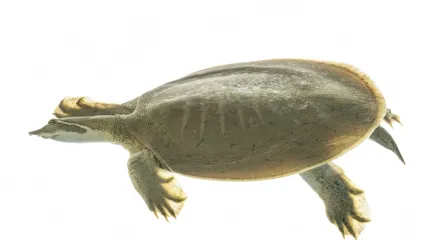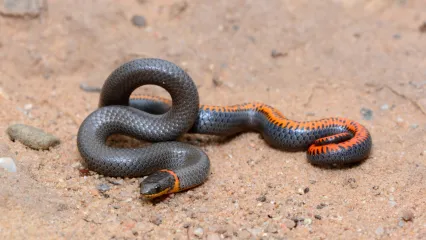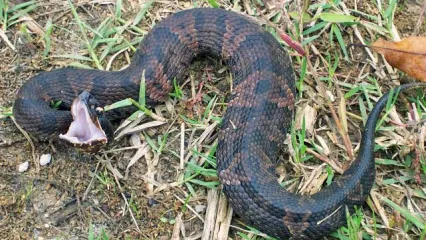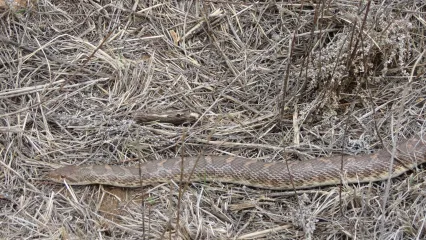
Description
The two species of softshell turtles (spiny and smooth) can easily be distinguished from all other turtles in Oklahoma by the total lack of scutes on the shell. Shells are relatively smooth and leather-like, except that the spiny softshell has distinct spines at the front and back of the shell. Edges of the shell are flexible. Webbing on feet is complete and the snout is long and thin. The smooth softshell lacks small spines at the front of the carapace just behind the neck, and the entire carapace is smooth, which is not the case in the spiny softshell. In addition, careful examination of the nostrils at the tip of the pointed snout reveals circular openings with no ridges projected toward the center.
Size
Adult females can reach 14 inches in carapace length, but males are much smaller, reaching only about 7 inches. Recently hatched juveniles are about one inch in plastron length.
Habitat
The North American distribution of smooth softshells is confined for the most part to tributaries of the Mississippi, Missouri, and Ohio rivers. North to south, they occur from southern North Dakota to south-central Texas, and from west to east from the Texas panhandle to Pennsylvania, with an isolated population in northeastern New Mexico.
Life Cycle
Smooth softshells are active from late April through mid-October. Male smooth softshells reach sexual maturity in about four years whereas females reach maturity at an age of nine years. Females deposit eggs in shallow nests on sandbars with little vegetation during late May and through June. Number of eggs in a clutch varies from 6-20 or more, averaging about 13. Hatchlings appear in August and September. Smooth softshells are omnivorous, eating fish, crayfish, snails, carrion, and nearly anything they can capture.
How To Observe
During spring, early summer, and fall, these turtles can often be seen basking on sand banks in the Canadian River. However, at a distance, they are difficult to distinguish from spiny softshells. They can occasionally be found by walking in the river bottom when water is low and searching in pools. Like spiny softshells, they often remain buried in the sand and can be difficult to find. Softshells are powerful swimmers, can run rapidly on land, and have sharp beaks and powerful jaws. They should be handled with care by gripping the back of the shell.
(This profile was created by Dr. Laurie Vitt as part of a partnership between the Wildlife Department and the Sam Noble Oklahoma Museum of Natural History. It was funded as part of a larger State Wildlife Grant to survey and inventory amphibians and reptiles of the Wildlife Management Areas of Oklahoma: T-35-P-1.)


